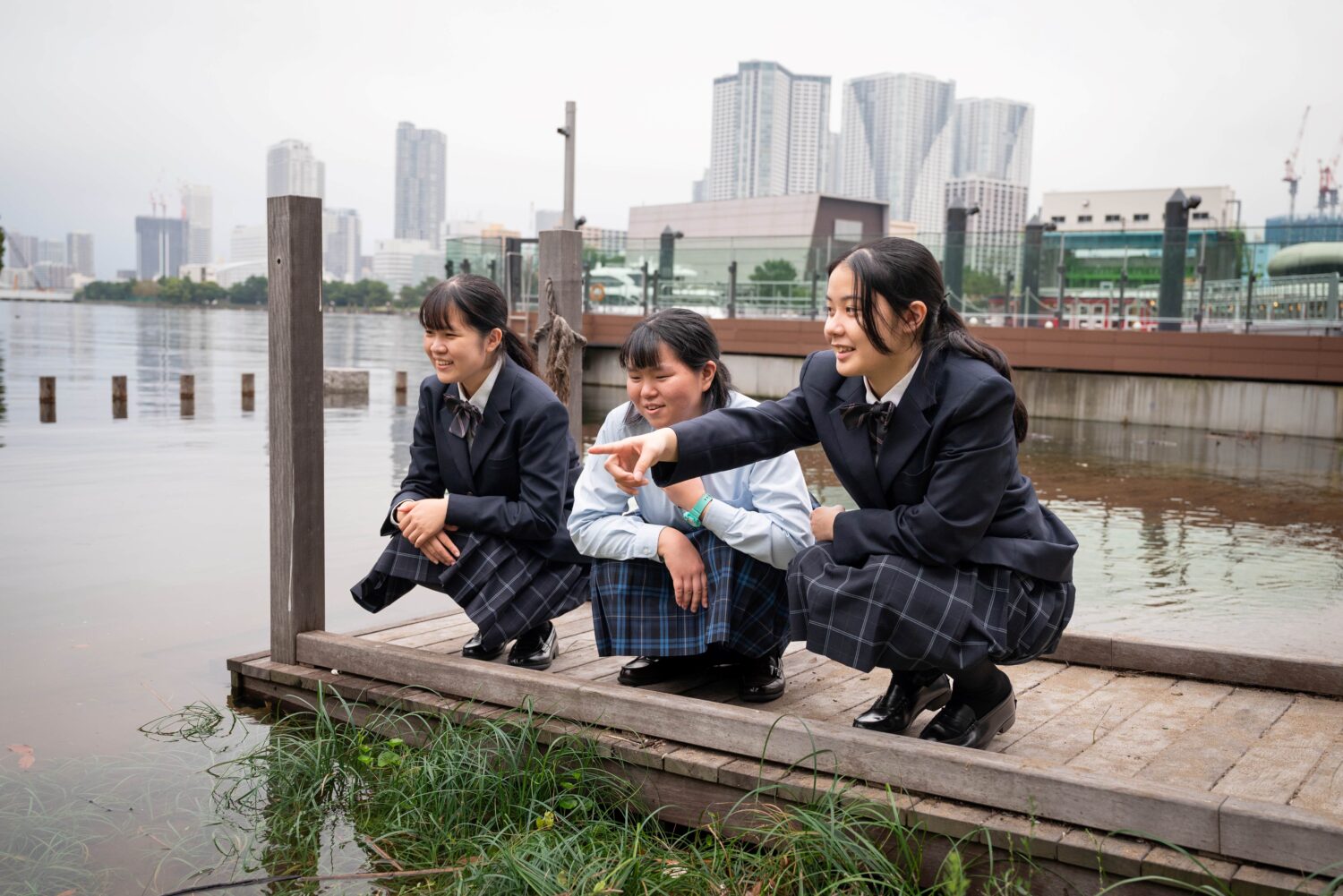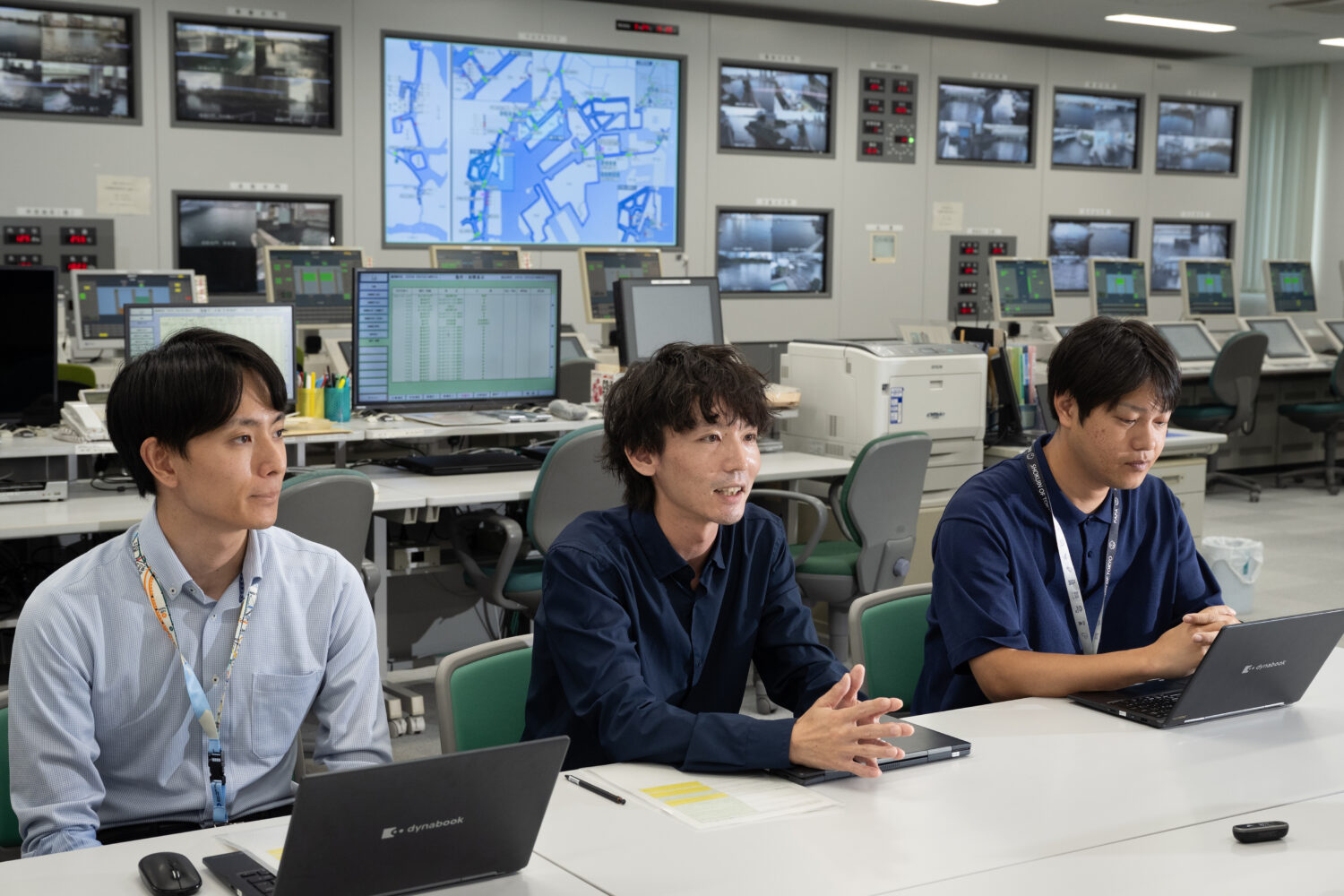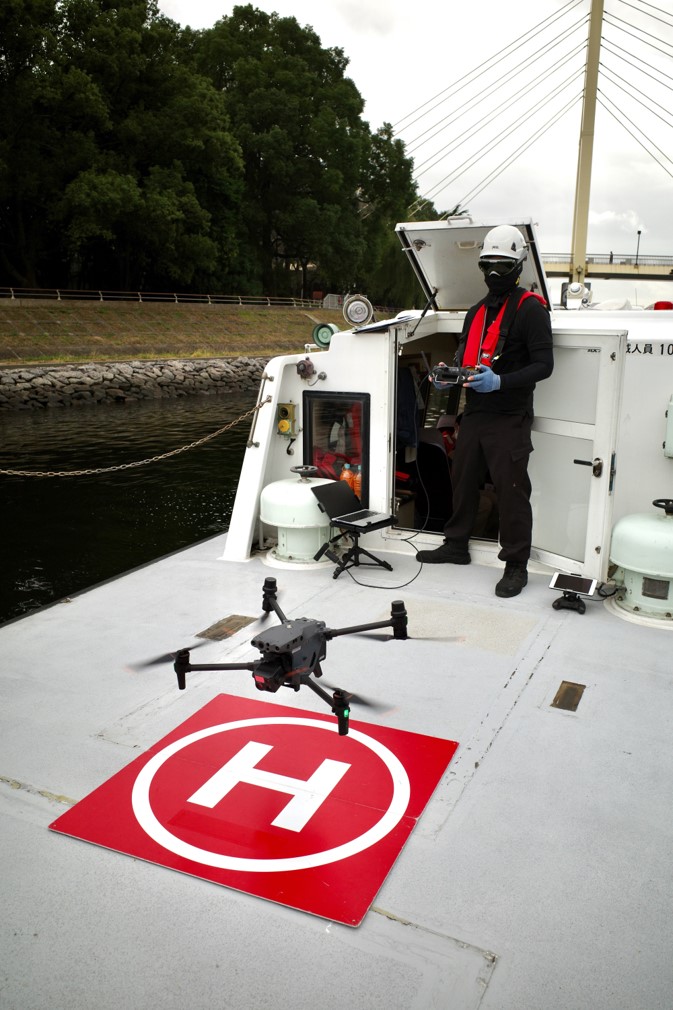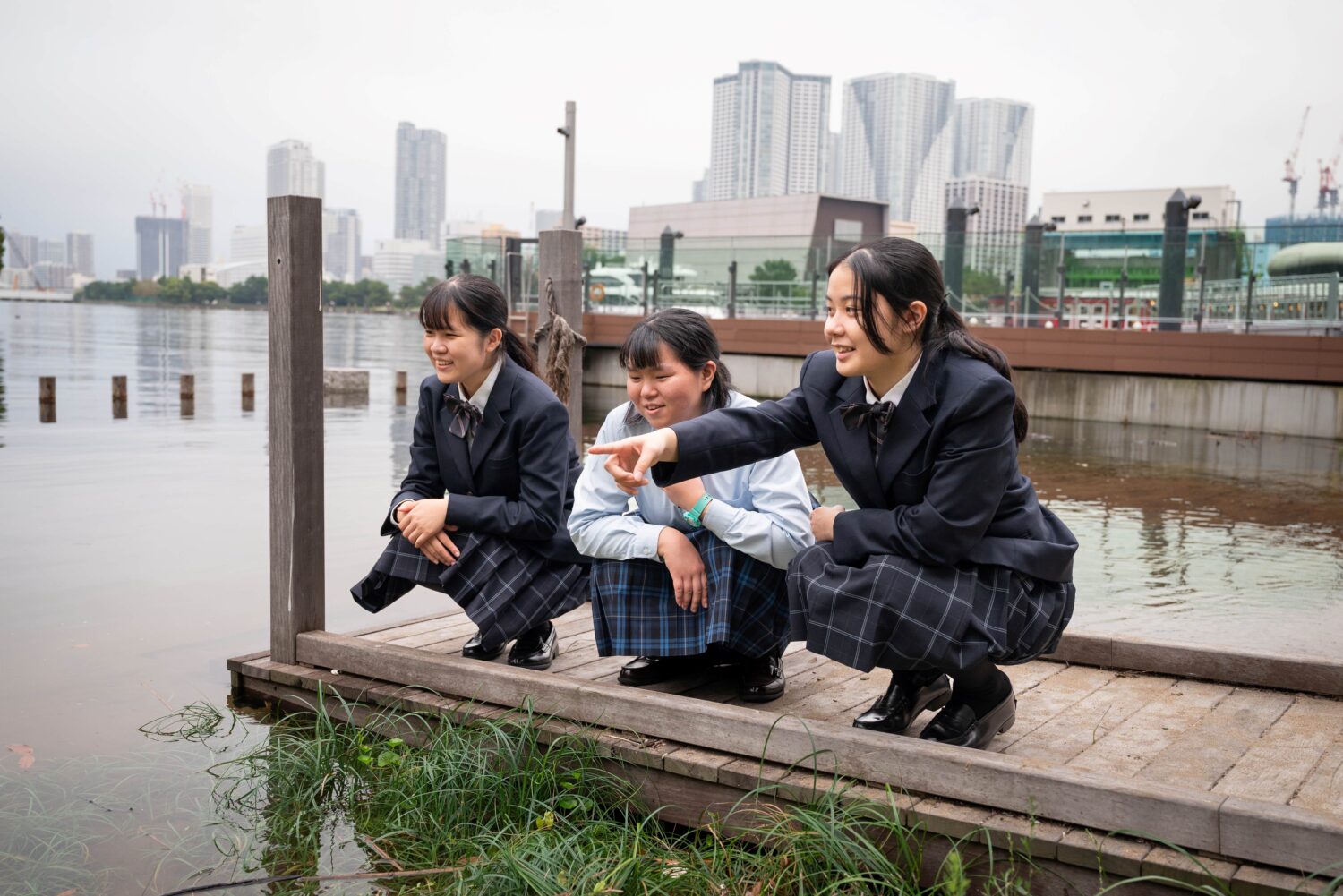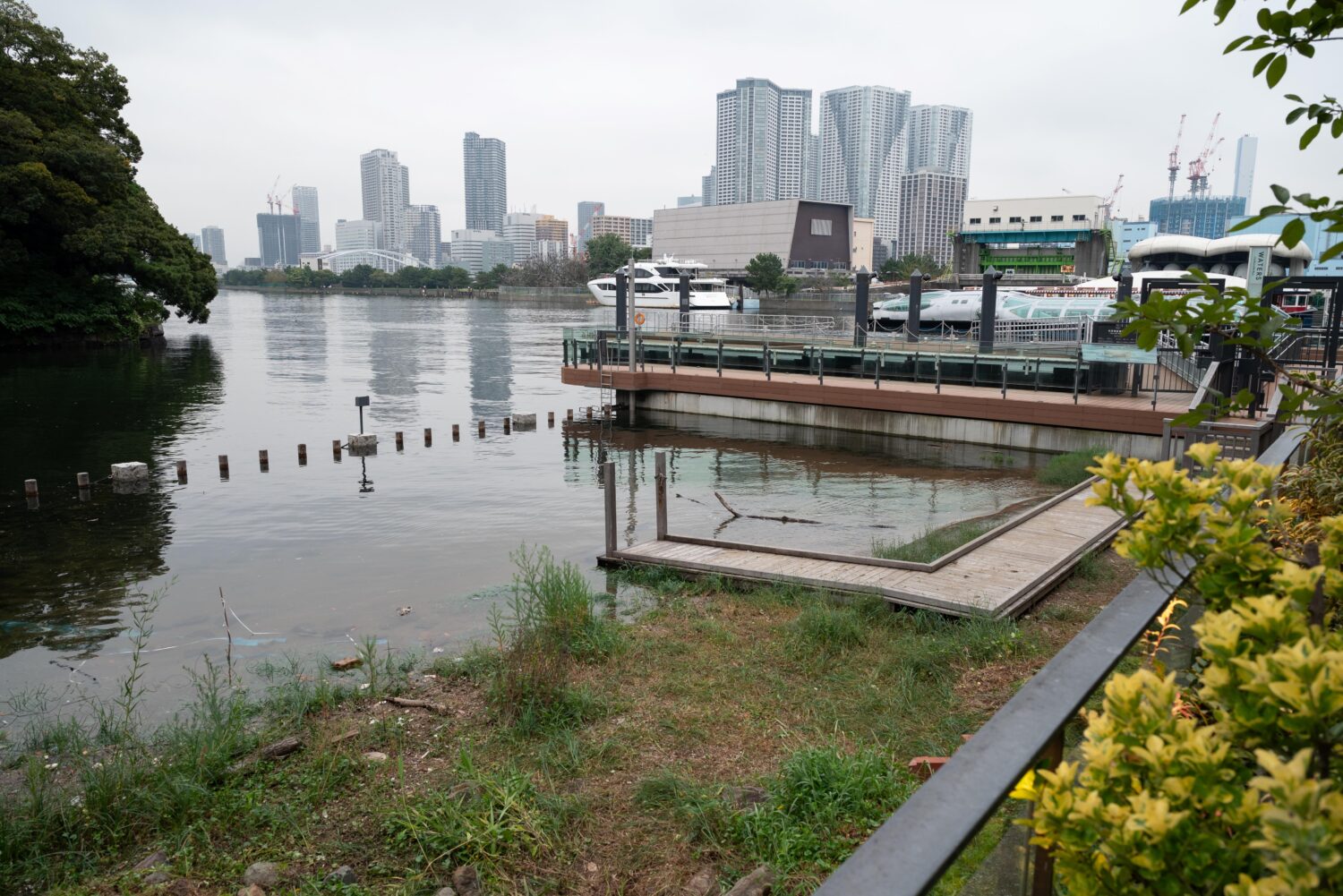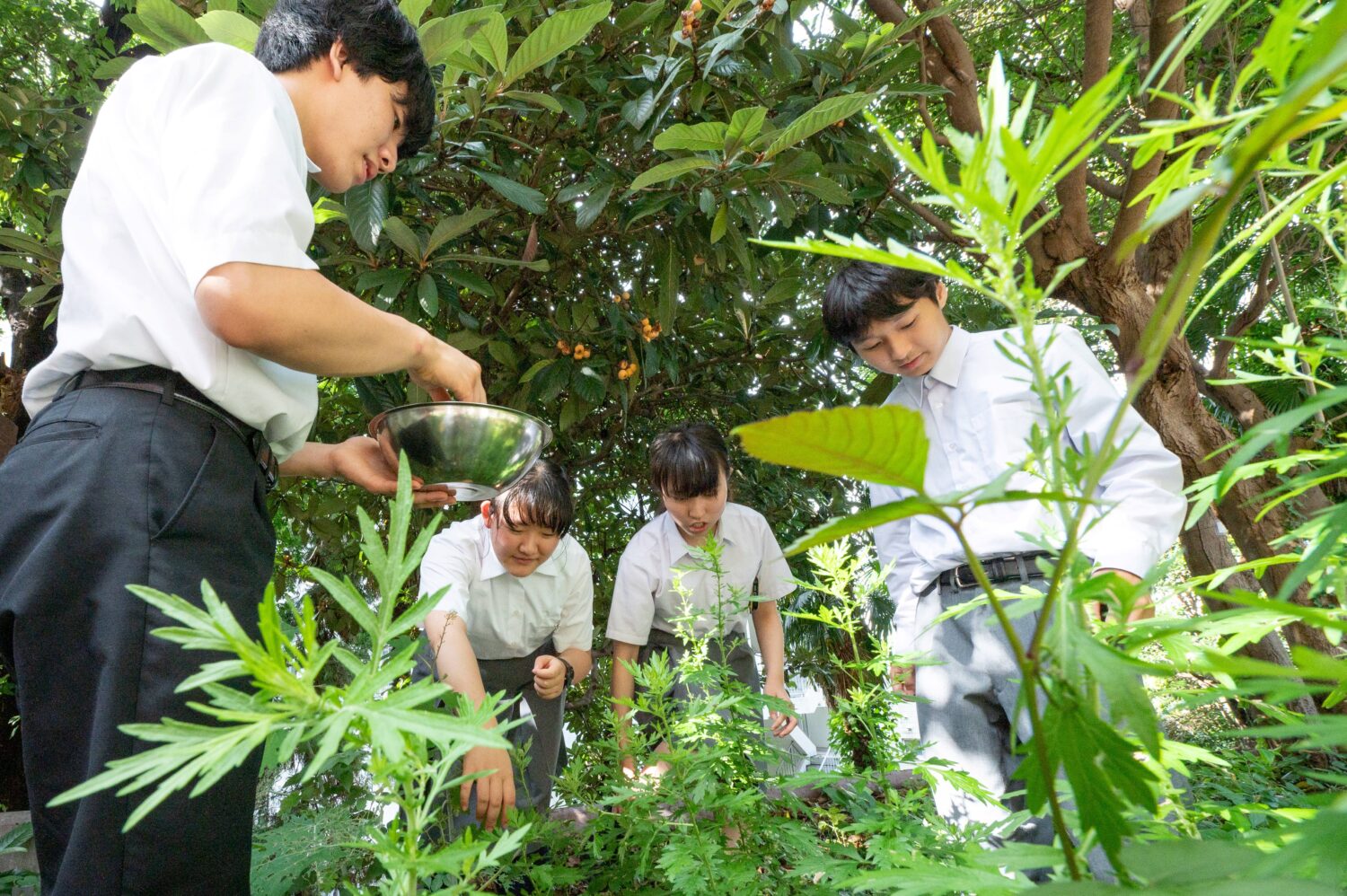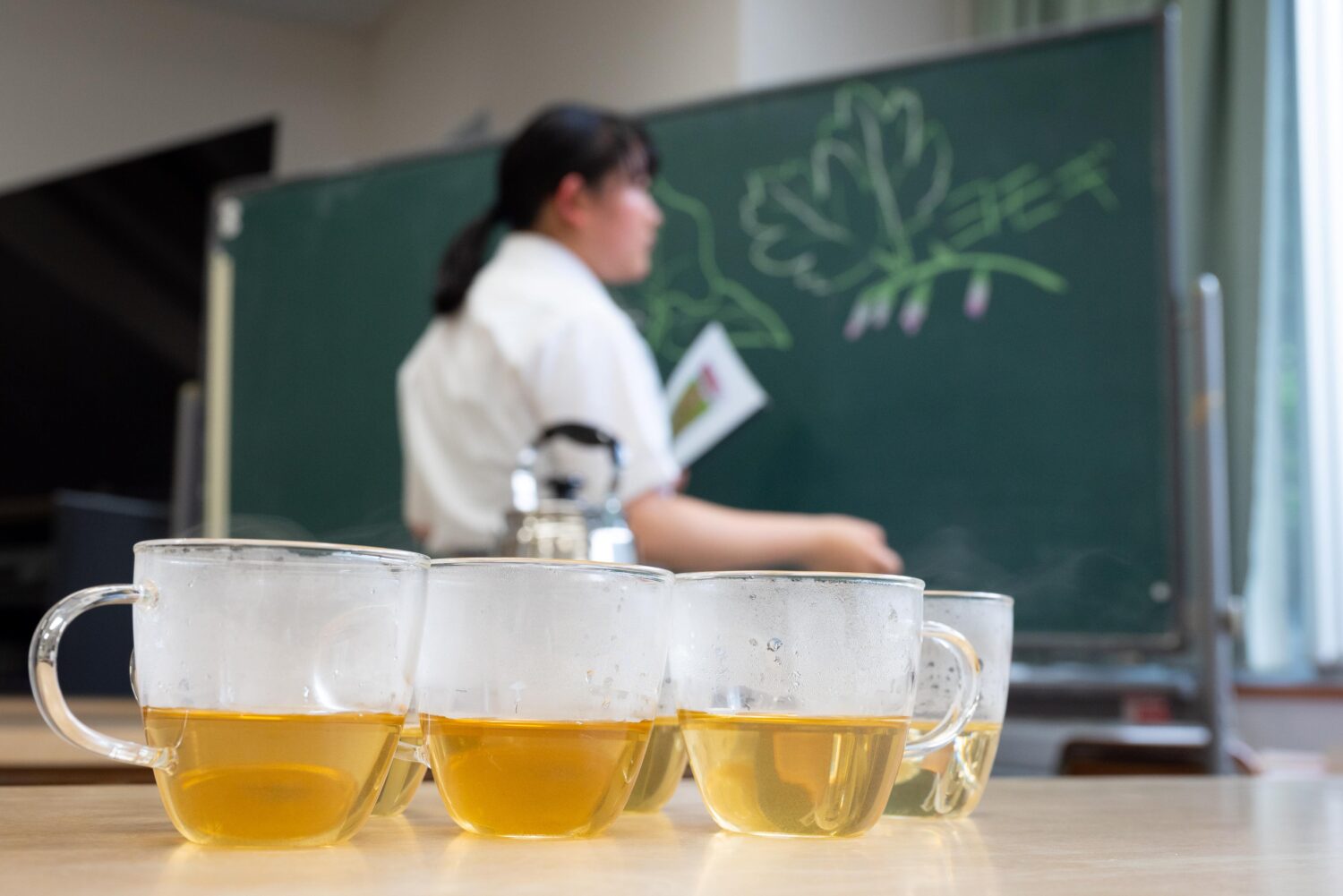Citizen Initiatives
The Tokyo Metropolitan Shiba Commercial High School is located on Tokyo's waterfront. The high school offers many unique extra-curricular club activities, but one in particular stands out: the Mudflat Club. The members of this club work proactively on the mudflat of WATERS takeshiba, a multipurpose complex close to the school. During the monthly Takeshiba Mudflat Open Days, the club members exchange opinions with mudflat researchers and also interact with children living nearby.
One of the members, Taguchi Kumino, says that coming into contact with Takeshiba's nature and organisms and watching visitors have fun heightened her awareness of conserving the environment in Tokyo. "We learned about waste issues in class at school, but when I actually started to pick up trash on the mudflat, I was shocked to see how much of it really washes up, including microplastic waste,” she says. “Seeing the situation up close made me talk to family and friends about protecting nature and organisms by not just stopping ourselves from throwing trash into nature but also making an effort to not produce waste at all."
Through their club activities, the members have learned the preciousness of nature and living creatures. Their goal is to sell 200 copies of the picture book created by previous members, Visit to a Mudflat, and continue communicating the wonders of the Takeshiba Mudflat.

